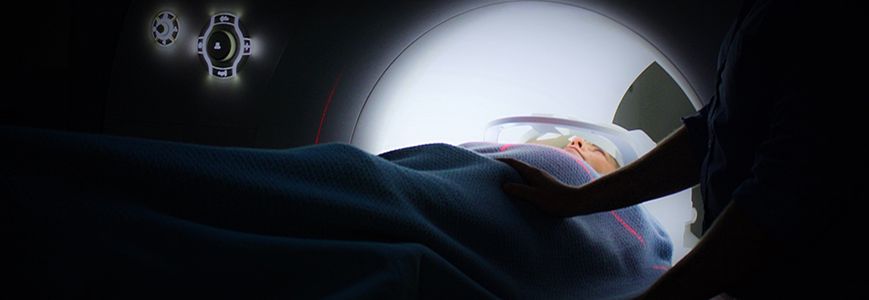Shape-shifting sensors could catch early signs of cancer

Tiny GEMs might someday help doctors diagnose diseases deep within the body, with the help of standard imaging equipment such as MRIs.
If you have a tumor or infection developing deep inside your body, your doctor might not catch the problem until it’s big enough to see with standard imaging equipment. But NIST scientists are developing a tool that could someday detect small signals from cancers and other conditions deep within your tissue, early in the process of forming.
The microscopic devices are called geometrically encoded magnetic (“GEM”) sensors. Just one-hundredth as wide as a human hair, the tiny GEMs change shape based on their environment. For example, the presence of a cancer cell can cause slight changes to the pH – the level of acidity or alkalinity – of the surrounding area. Inflammation deep inside tissue can change local pH levels too. Detecting these changes might reveal the presence of an unseen tumor, or show whether an infection has developed around a surgical implant.
NIST researchers have shown that GEMs can spot these small changes in pH, at least in laboratory tests. The sensors look like tiny sandwiches, with a gel wedged between two disks of magnetic metal. The gel swells or shrinks depending on the pH of its environment. As it expands, the metal disks grow farther apart; as it contracts, the disks grow closer together.
The change in the distance between the metal disks also changes the signal given off by the GEMs when they’re exposed to radio waves, a kind of light that is able to travel through human tissue.
This changing signal could be detected with standard equipment that doctors already use, such as magnetic resonance imagers (MRIs). As a result, the devices could get strong, distinctive signals from very small dimensions at locations within the body that would be impossible to probe with other kinds of sensors.
In the coming years, scientists are hoping to shrink GEMs even smaller, which would open up more potential applications. With further work, the shape-shifting sensors could also be adapted to measure other features besides pH level, including glucose, local temperatures, and the presence or absence of naturally occurring chemicals called enzymes.
Contacts
-
PML webmaster

